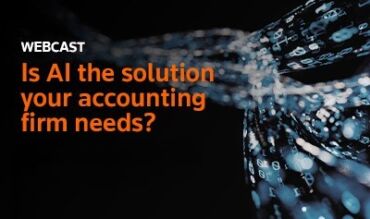Do you have clients working full- or part-time in the gig economy? Self-employed workers who drive for Uber or deliver food for DoorDash, who sell crafts and merchandise on Etsy, or who hire out their services on TaskRabbit? These budding entrepreneurs often get paid through mobile payment services like Venmo, Paypal or CashApp or get paid directly through the Uber or Doordash app. Beginning in 2022, third-party settlement organizations (TPSOs)), including banks and on-line payment networks (payment settlement entities (PSEs), are required to report payments of $600 or more to IRS and payees on Form 1099-K, Merchant Card and Third-Party Network Payments.
Congress dropped the minimum threshold for TPSOs to file Form 1099-K for a taxpayer from $20,000 of reportable payments made to the taxpayer and 200 transactions to $600 (the same threshold applicable to other Forms 1099). The lower threshold for filing Form 1099-K means many participants in the gig economy will be getting Forms 1099-K for the first time in 2023, especially taxpayers who have been doing these activities as side gigs. While bills have been introduced in Congress to raise the limits back to $20,000/200 transactions, there is no guarantee they will pass. In truth, we know that self-employed workers should be reporting income from their side gigs, whether it’s reported to the IRS on a Form 1099 or not.
For example, freelancers who make money from Etsy businesses or driving for Uber should have been paying taxes on net business income all along. But Congress and the IRS know that self-employed gig workers are falling short of their responsibility to report income. It’s possible some gig workers may not even be aware that income from these sources is subject to tax, let alone their responsibility to pay quarterly estimated taxes to the IRS. These unsuspecting clients will be surprised when they receive their first 1099-K Form in January 2023.
Tax practitioners will do well to advise their gig-working clients that they have a Schedule C business with taxable income and that they should keep proper documentation to accurately report net income to minimize their tax liability.
Separate Personal Amounts from Gig Income Receipts
Separating nontaxable personal amounts received (money from personal loans or money received as a gift) from gig work income is a helpful first step towards tracking a side gig business. Some examples of personal income that aren’t subject to tax include:
- Money Venmoed from a friend to split a shared meal at a restaurant,
- Paypal money you received from friends when you purchased a block of tickets to a concert and they are reimbursing you for their ticket, or
- Colleagues reimbursing you for that large baby shower gift you all went in on for a worker’s baby shower.
None of these nontaxable personal amounts should flow through a side gig TPSO because they aren’t subject to taxation like gig work income is. TPSOs cannot distinguish between personal amounts someone may receive vs. gig work income from performing services, so gig workers should establish separate TPSO account for their gig income and gig expenses and treat their self-employment as a true business reported on Schedule C of their Form 1040 Federal Income tax return.
Start Tracking Deductions
Gig workers who haven’t been reporting income from their side gig probably haven’t been documenting their allowable deductions either. Form 1099-K will only report gross receipts from gig side jobs, it will not show the ordinary and necessary business expenses that are deductible by the self-employed worker for performing services. Certain expenses are fully or partially deductible against reported 1099-K income, and gig workers should track these expenses to reduce taxable income and minimize their tax liability. The IRS may take the position that all of a taxpayer’s gross receipts reported on Form 1099-K are income and will disallow deductions unless the taxpayer can substantiate them.
Ideally a taxpayer should keep receipts as evidence supporting their deductions. However, advising clients to keep a separate bank account and run all business expenses through that account will minimally provide bank statements and cancelled checks as substantiation for deductions, which is better than nothing. Deductions will vary based on the nature of the taxpayer’s side gig, but here are some items to consider:
Vehicle expenses/mileage
The main expenses for rideshare and delivery drivers are likely to be vehicle expenses. Taxpayers may deduct either the actual cost of using the vehicle in a trade or business or claim a per mile deduction allowance, which is 58.5 cents per mile for January through June 2022 and 62.5 cents per mile for July through December 2022.
Where the client is driving their own car for their side gig, it’s important to distinguish between business and personal auto expenses. Remember that driving to pick up fares gives rise to deductible expenses, even if the driver does not have a passenger in the car. However, IRS is likely to disallow a certain part of the expenses if it thinks the taxpayer is running personal errands between passengers.
Passenger automobiles are subject to heightened substantiation rules under Code Sec. 274(d). Taxpayers can use either the actual cost method or the standard mileage rate to substantiate vehicle deductions. Mobile device apps can make capturing mileage information easier.
Cell phone and internet service
Some side gigs require taxpayers use their cell phones or internet. The first step to substantiating these expenses is keeping cell phone bill records. Next, cell phone usage needs to be apportioned or allocated between personal and business use. Courts have allowed deductions based on testimony, but it is better to document business use contemporaneously, as it occurs (not after the fact of an audit); courts need a reasonable basis to estimate business vs. personal use. Cell phones will store call logs/browser history/e-mail history, which can also be used to substantiate business use.
Other expenses
Some side gigs may require taxpayers to purchase their own work clothing. There are three requirements to deduct expenses related to work clothing:
- the clothing must be required or essential for the employment;
- it must not be adaptable to general usage as ordinary clothing; and
- it must not be actually worn as ordinary clothing.
Ask the client if their side gig requires the purchase of tools, supplies, and equipment. A deduction is generally allowed for these if they are ordinary and necessary in the taxpayer’s trade or business. Tools and equipment used for production of goods have a de minimis safe harbor that allows for immediate expensing of items or invoices of $2,500 or less, otherwise equipment may need to be depreciated for tax purposes.
Expenses for meals when the taxpayer is not away from home are only deductible if eaten during a business meeting or for a business purpose.
Also, don’t forget hobby loss rules and the requirement to show a business profit for a certain amount of years or otherwise limit deductions for activities not engaged in for profit.
What to do now
Taxpayers should begin collecting necessary information so they can accurately report their business activity for the 2022 tax year. Taxpayers can increase withholding or file estimated taxes if necessary to avoid underpayment and late payment penalties. Consider whether the taxpayer’s 2022 income is subject to self-employment (SECA) tax.
Make sure payments are being recorded accurately. Payments received in a trade or business should be separated from personal payments for things such as check-splitting at restaurants or gifts. If payments have been reported incorrectly, try to get corrected Forms 1099-K.
Taxpayer and preparer obligations
Practitioners can start explaining Form 1099-K to their clients now and be prepared to answer their questions in January. Preparers cannot omit taxable side-gig income (whether or not reported on a Form 1099-K) from a gig worker’s Form 1040 tax return. Discuss taxpayer penalties for failing to report income. Remember that there are also preparer penalties for failing to report income correctly.
Checkpoint Edge has detailed guidance on Form 1099-K and how to prepare your clients. Sign up for a free 7-day trial today.
FTC 2d Par. M-5800 et seq., – Activities not engaged in for profit – Hobby Loss Rules.
FTC 2d Par. L – 4500 et seq., Substantiating trade or business expenses.
FTC 2d Par. L-4645 et seq., – Substantiating automobile expenses.
FTC 2d Par. L-5601.5 De Minimis Safe Harbor Election amount paid to acquire or produce property.
FTC 2d Par. V-2630 et seq., – Civil penalties imposed against return preparers.
FTC 2d Par. S-5200 et seq., Individual’s estimated tax.
FTC 2d Par. A-6000 et seq., Self-employment tax. Taxpayers and practitioners may also wish to consult the IRS Gig Economy Tax Center on irs.gov.












